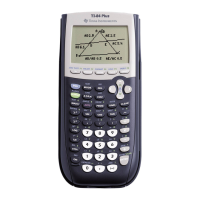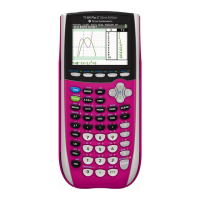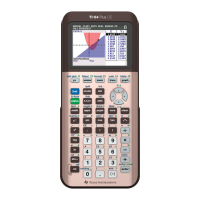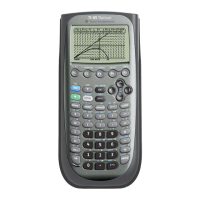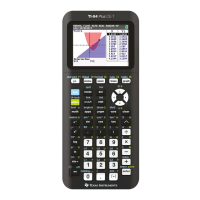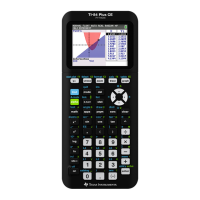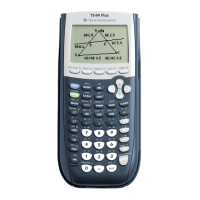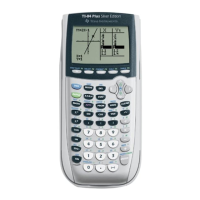




Do you have a question about the Texas Instruments TI-83-Plus and is the answer not in the manual?
| Display Type | LCD |
|---|---|
| Display Resolution | 96 x 64 pixels |
| Power Source | 4 AAA batteries |
| Programming Language | TI-BASIC, Z80 Assembly |
| Backup Power | CR1616 or CR1620 lithium battery |
| RAM | 24 KB |
| Processor | Zilog Z80 |
| Weight | 7.4 oz (210 g) with batteries |
| Dimensions | 7.3 x 3.5 x 0.9 inches |
Defines conventions for program text, syntax, and optional parameters in guide examples.
Explains the types of programs that can be created and the guide's focus on Flash ROM apps and RAM assembly programs.
Describes the TI-83 Plus architecture composed of several layers: Hardware, Drivers, Tools, and Programming.
Covers the Zilog Z80 CPU, RAM, and Flash ROM components of the TI-83 Plus unit.
Explains the 32K RAM partitioning into areas like System RAM, User RAM, and Floating Point Stack.
Details the 512K Flash ROM composition, divided into 32 pages of 16K each.
Explains accessing TI-83 Plus system routines using Z80 RST instruction and macro-instructions.
Outlines rules for naming variables, including predefined and user-defined names and their formats.
Describes preallocated system RAM variables essential for built-in functionality.
Covers keyboard input, display access, and link port communication functionalities.
Details accessing the TI-83 Plus display via system routines or directly writing to the display driver.
Differentiates between pixel-based drawing routines and graph routines tied to WINDOW settings.
Covers essential development tools like error handlers, utility routines, and debugging features.
Explains setting up error exception handlers using AppOnErr and AppOffErr macros to capture system errors.
Discusses temporary variables used for intermediate results and their management.
Details how applications interact with the TI-83 Plus application loader and state monitor.
Covers the final layer of TI-83 Plus architecture, focusing on TI BASIC, ASM, and Applications.
Defines applications as Flash ROM programs, their PC creation, signing requirements, and larger scale.
Introduces the simulator for general development, setup, and sample application creation.
Lists requirements for TI-83 Plus application development using Zilog Developer Studio and TI Simulator/Debugger.
Demonstrates setting breakpoints, modifying RAM, and using the Memory Map view for debugging.
Explains using TI GRAPH LINK or TI Connect to download applications to calculators.
Outlines the TI development architecture based on the TI simulator/debugger and Zilog Developer Studio.
Describes the TI-83 Plus simulator for debugging applications, detailing menu options and operations.
Explains setting and removing breakpoints via the manual setup dialog box in the debugger.
Displays processor information such as index registers, stack pointer, and flags.
Displays entire Flash memory contents, allowing address viewing and toggling between physical/logical modes.
Displays entire RAM contents, allowing address viewing and toggling between physical/logical modes.
Allows recording and playing back key presses, with setup options for files and rates.
Lists resources for help in writing TI-83 Plus applications, including guides and tutorials.




